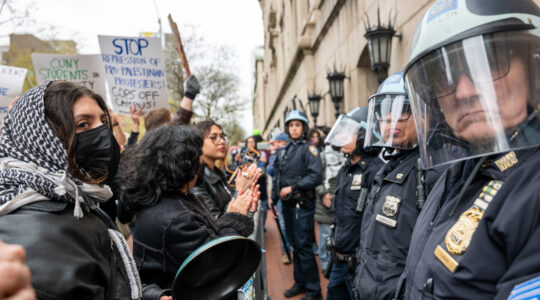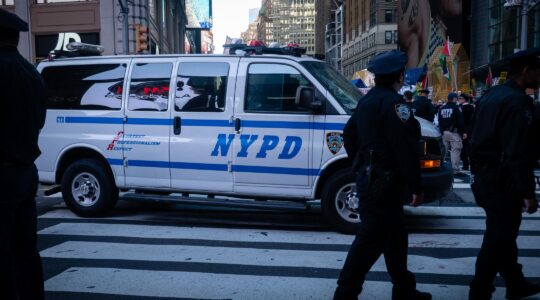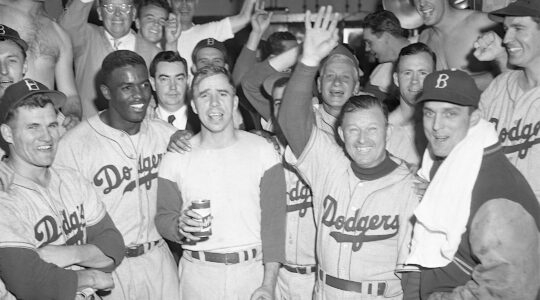My greatest lesson about graves came in an unlikely place: an airplane terminal.
In 1981 I traveled to Israel to cover, among many assignments, the World Gathering of Jewish Holocaust Survivors, a once-in-a-lifetime conference/reunion/symposium based at Jerusalem’s International Convention Center.
The participants (aging survivors who brought their children and grandchildren) spent days sharing memories, crying together, and celebrating their survival. And commemorating the victims. The survivors were informed that they could bring to the Holy Land tombstones, in any style they chose, in memory of their dear departed, physical reminders of relatives who had died in unmarked graves or pits or gas chambers during the Shoah. The markers’ home would be a special memorial section of Yad Vashem; the survivors would finally have a place where they could say Kaddish.
Maybe a few survivors would take up the offer, I thought.
Maybe they would bring small matzevos (gravestones), I thought.
Maybe the markers would be simple, with a few carved words, just the victims’ name and birth date, I thought.
I was wrong on all counts.
As I waited in line at JFK Airport, I felt I was in the showroom of a gravestone company.
Many of the passengers, more than I could have imagined, were transporting, in addition to their usual luggage, large gravestones. Marble gravestones. The size found in any cemetery. With all the traditional, inscribed personal details. How they had shlepped the markers to the airport, I don’t remember. How they could afford to pay for the items’ transportation (not to mention their manufacture) I don’t know.
Why they did it became immediately apparent.
They, a few hundred of them, wanted to be able to mourn their losses (on an individual level, not only communally at times like Yom HaShoah) like any other mourner. At a gravesite; or at least at a hallowed setting like Yad Vashem. They wanted a place to visit, to leave a stone. They wanted some permanent sign that their loved one had lived.
And they wanted to do it before it was too late. They treated their unique cargo, some bound in wooden crates, with due reverence.
Support the New York Jewish Week
Our nonprofit newsroom depends on readers like you. Make a donation now to support independent Jewish journalism in New York.
The World Gathering was 25 years ago this week. I thought of it recently after I visited my father’s grave, on a visit back home, for the first time since Dad died last November.
There’s a simple marker, a gift of the U.S. Army, at the head of the grave. There won’t be a more-traditional gravestone; the cemetery allows only one marker at each grave.
Dad would be pleased. He served briefly in uniform after coming to the U.S. as a refugee from Nazi Germany, and was proud of his service to his adopted country.
For our family, no discussions about what to include on a gravestone, no formal unveiling.
As awful as it was to lose Dad, at least we know where he is buried.
When I went the other day to Dad’s grave, I saw a patch of barren, cracked ground, with only a few blades of grass and some clover taking root. It was less stark than the freshly dug pit we stood before six months ago.
When I go next time, there probably will be more grass. One day Dad’s grave will be part of the lawn at Forest Lawn in Buffalo.
The healing symbolism of a grave struck me when Aunt Hen, a second mother to me and my sisters, died nine years ago. At her burial, there was an empty hole; that was how our hearts felt. A few months later, accompanying Mom to the cemetery, a covering of grass had sprouted at the filled-in grave, less dense than the area surrounding it. By then, our pain had begun to wane. On each subsequent visit, it was harder to determine the exact contours of Aunt Hen’s grave; finally, the grass in the shadow of the gravestone had become part of a field of green. Just like our lives at home, the cycle of nature at the cemetery went on. Our pain dissipated, but never disappeared. The grass grows in, but a gravestone is a reminder of our loss.
The survivors on their way to Israel in 1981 showed me that.
Mourning a beloved member of the family at graveside is sad. Having no graveside at which to mourn is even sadder.
Steve Lipman is a staff writer and author of "Laughter in Hell: The Use of Humor During the Holocaust."




